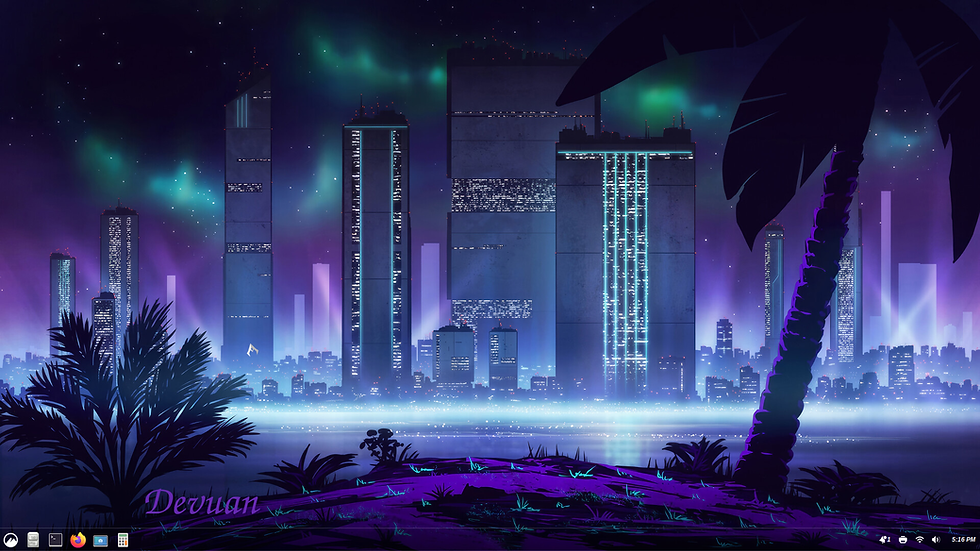How To Know When The Memory And GPU Is Bad
- writerforlinux
- Dec 5, 2024
- 3 min read
After a recent encounter with a friends Linux computer having freezing issue's I was intrigued to dig in and find out what was going on.

In this particular situation the symptoms, anomalies and performance issues were enough for me to look into. When my friends triple booted Linux desktop started showing strange signs on the screen (see the screenshot below) I knew right away this was a performance issue for sure.

Each Time Linux Mint, LMDE 6 or Spark Linux would boot there would be anomalies on the monitors screen. I suspected that it was the RAM or Memory on it's way out. In addition to that first thought about the RAM I was also suspicious of the GPU (graphics card) as well.
In the screenshot below you can see what I mean were the red arrows are.

Running Memtest 86 was the way to go in finding out if the RAM in my buddy's rig was bad.
Memtest is a good program and does exactly what it was created to do.
The RAM was in fact bad.
You can run a clean eraser along both side of the memory sticks and try putting them back into place on the motherboard and see if cleaning them helps. Additionally, you can use a clean cloth just make sure the cloth is lint free. Or you can use isopropyl alcohol just be sure that the cloth or Q-tip isn't dripping with alcohol.

These are the signs of your computers Memory on it's way out.
Frequent system crashes or blue screens
Unexplained system slowdowns
Applications crashing or freezing frequently
Inability to boot your computer
Distorted graphics and other visual anomalies
Running Memtest for a second time there wasn't any doubt that the RAM was bad and a replacement was needed.

I trusted Memtest however; what helped to confirm that the memory was on it's way out was this article I found on Tom's Hardware.
Another sign was corrupted files. Files were failing to saved properly. This will lead to data loss.
The way that I was able to find out that the files were corrupted and not saved, is they were once there on the system so..... when I went to look for them they were gone. More importantly, when I tried to drop to a root terminal and re-create the network interfaces files and rebooted they didn't exist.
Corsair has a good article on testing RAM modules for memory issues.
Once the new memory sticks arrived and put in place I re-ran Memtest to ensure that there weren't any issues. All was good.
After many reboots to try to copy all of the files from all three Linux installations, the system still continued to lock up/freeze while using Firefox. With the new memory sticks in place the same things in the screenshots above showing the anomalies on the monitor only became worse.
The GPU (graphics processing unit) aka the graphics card, was hot to the touch. When the system was in the process of booting up I checked on the GPU's fans. Looking closer I saw that only one of the fans was spinning.

This MSI Gaming custom build was 12 years old btw. It was a uncomfortable and unfortunate situation to see my friends desktop go down.
The good news is you're caught up and clued in on these two hardware components and what to look for if they begin to fail.
Here is a very special thanks to my Linux friends that assisted me in diagnosing these troubling issues.
Condobloke, CaffeineAddict, Osprey, KGIII and Brickwizard.
As always thanks for stopping in and drive your Linux safe.
Alex



Comments